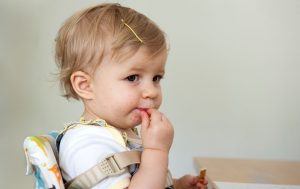Why Car‑Seat Fit Is a Big Deal
Motor‑vehicle crashes remain the leading cause of injury death for U.S. children under one year.¹ Correct car‑seat use cuts fatal injury risk by 71 percent, yet the National Highway Traffic Safety Administration (NHTSA) still finds 59 percent of seats mis‑used—usually wrong recline or loose straps. Knowing the basics before hospital discharge turns that first drive home into a moment of joy, not anxiety.
Choose the Right Seat: Rear‑Facing Only or Convertible?
| Seat Type | Pros | Cons | Best For |
| Rear‑Facing Only (infant carrier) | Carry baby asleep, click into stroller base | Outgrown by 9–12 mo | Frequent car‑to‑stroller transfers |
| Convertible (rear‑ to front‑facing) | Saves money long‑term; higher height limits | Bulkier, fixed in car | Families driving daily but less walking |
Key Specs to Check
- Lowest harness slot ≤ 6 in (fits 5‑lb preemies).
- Weight range starting at 4 lb—important for smaller newborns.
- Expiration date—plastic and foam degrade; aim for 7‑year lifespan if planning siblings.
Use the Consumer Product Safety Commission recall list to confirm your model’s safety record (opens in new tab).
Installation 101: LATCH vs Seat Belt
Both are equally safe if used correctly—pick whichever yields the tightest fit.
| Step | LATCH | Seat Belt |
| Attach | Clip lower anchors, tighten | Thread belt through red rear‑facing path |
| Tighten | Press seat, pull strap until < 1 in wiggle | Switch to locking mode or use locking clip |
| Check | Tug at belt-path level, side‑to‑side | Same 1‑in or less movement |
Pro tip: Kneel in the seat (knee, not foot) while tightening; aim for < 1 inch movement at the belt path.
Perfect Newborn Recline: The 45‑Degree Rule
A baby’s airway is narrow—chin on chest can collapse it. Most seats have a bubble or color indicator; keep the ball in the middle or the line level to the ground.
Garage Test
Park on level surface → place a phone level app on seat back → adjust base until 45° angle confirms. Driveways often slope; tiny changes matter.
Harness Height & Tightness
- Height: For rear‑facing, straps at or just below shoulder level.
- Buckle: Tongues fully click; chest clip at armpit level.
- Tension: Try the “pinch test.” After tightening, pinch strap at collarbone—fingers should slide off; if you grasp webbing, tighten more.
Avoid aftermarket strap pads; extra bulk compresses in a crash, defeating snug fit.
Cold‑Weather Myth Buster
Bulky coats create false tightness. Instead:
- Dress baby in thin fleece layers.
- Buckle snugly, then lay a blanket over straps.
- Use a car‑seat‑specific “shower‑cap” cover—never a back‑insert style (interferes with harness).
Crash‑testing videos by Transport Canada show coat compression up to 4 inches in simulated collisions—enough for ejection.²
Travel Checklist Before Every Trip
| Item | Why | Tick ✔ |
| Harness snug (pinch test) | Prevents ejection | |
| Chest clip at armpits | Spreads crash force | |
| No toys on handle | Projectiles in crash | |
| 45° recline bubble checked | Protect airway | |
| Diaper bag secured | Loose bags can injure |
Print this card for your visor; repetition builds muscle memory.
Common Mistakes—And Fixes
| Mistake | Quick Fix |
| Handle left upright in driving mode | Most seats require handle down; check manual |
| Aftermarket head insert | Remove; use rolled receiving blankets beside head—not behind |
| Seat on top of cart | Click into cart basket instead—falls off top rail easily |
| Using both LATCH & belt | Choose one unless manual says both; extra slack can form |
Find your manual online via the NHTSA Car‑Seat Manufacturer Directory.
Growth Checkpoints
| Age | What to Re‑measure | Typical Change |
| 2 months | Shoulder height vs harness slot | +1 in |
| 4 months | Weight vs base weight limits | +4 lb |
| 6 months | Head < 1 in from seat top? | May switch to taller convertible |
Discuss at your Next Well Check—our nurses re‑fit straps and update settings free.
Road‑Trip Hacks
- Feed, then buckle—no bottles in seat; choking risk on recline.
- Plan 2‑hour stops—stretch and reduce positional plagiocephaly risk.
- Use window shade—sun through glass heats straps to burn level; cling‑on screens block UV without foam inserts.
Parent Self‑Check: Confidence Scale
Rate 1–5 (5 = “I could teach it”)
| Skill | Score |
| Tightening harness | |
| Adjusting recline | |
| Switching seat between cars | |
| Knowing crash, replace guideline |
If any score ≤ 3, schedule a tech fit—they’re free statewide via Safe Kids Worldwide seat‑check locator.
Crash = Replace? Yes, if…
- Airbags deployed
- Door nearest seat damaged
- Any passenger injured
- Car towed from scene
Even low‑speed fender‑benders can stress plastic micro‑fractures unseen. Insurance typically covers replacement with receipt and police report.
External Resources for New Parents
- Ultimate Car‑Seat Guide – interactive tool by Safe Kids.
- Happiest Baby Car‑Seat Safety Video Series – visual demos for swaddling and buckling.
Both open in new tabs so you can keep this checklist handy.
Buckle, Check, Drive—Repeat
Mastering newborn car‑seat safety means every trip—from first pediatric visit to late‑night pharmacy run—starts with confidence. Angle, strap height, and snug harness beat crash forces, letting your baby snooze safely through the ride.
Want Professional Eyes on Your Install?
Car‑seat check at your newborn visit—our certified technicians adjust angles, straps, and base tightness while you feed or change baby.







